
The 212 Export model was powered by a new version of the classical Gioachino Colombo-designed, two-cam 60-degree V12-cylinder engine, displacing 2562cc. Most Exports were purchased for use in competition and so three Weber 32 DCF carburetors were normally fitted, and power output was a healthy 175bhp at 6,500rpm, transmitted through a slick-to-use Ferrari five-speed non-synchromesh gearbox. Typically weighing some ten per cent less than the ‘stock’ sister model 212 Inter, the competition-orientated Exports were capable of some 140mph and 0-60mph acceleration in as little as seven seconds. Production totaled only some 28 individual cars, of which only two are believed to have worn the Rocco Motto body style offered here on this very important 212 Export.
This car’s first private owner ex-works was the enthusiastic Florentine amateur racing driver Piero Scotti. He took delivery of the car – unusually painted metallic grey – in the early Spring of 1951 and on April 28 that year he drove it in the XVIII Mille Miglia accompanied by Amos Ruspaggiari. The car’s start-time race number was ‘434’, and Scotti achieved astonishing success with it – returning to the starting point at Brescia after 1,000 miles’ hectic racing on the public roads of Italy to finish third overall!
Consequently this Ferrari 212 Export has since featured prominently in such respected publications as Giannino Marzotto’s books ‘La Ferrari alla Mille Miglia’ and ‘Red Arrows – Ferraris at the Mille Miglia”), and the Andrea Curami and Luca Ronchi book ‘Mille Miglia 1947-1957’, not to forget the manufacturer’s own ‘1951 Ferrari Yearbook’.
On June 3, 1951, Scotti reappeared in ‘0094E’ now offered here, again finishing third – this time in the Giro di Toscana. Two weeks later he placed fifth in the more prominent V Coppa d’Oro delle Dolomiti – a wonderful public road race around the Italian mountain range – in which he also won the Ferrari’s class. His exploit there is well recorded in the Gianni Cancellieri and Cesare De Agostini book, ‘Polvere e Gloria -La Coppa d’Oro delle Dolomiti 1947-1956’.
Scotti continued to campaign the car in public road events around Italy. On July 29, 1951, he contested the XIII Aosta-Gran San Bernardo mountain climb and on August 12 raced in the VII Circuito Automobilistico di Senigallia in which he finished second overall. Again this well-promoted Ferrari features in worthwhile books of racing history, Benito Quadraroli’s ‘Circuito di Senigallia-Annali’ and Andrea Curami’s ‘Cinquant’anni di mito Ferrari 1947-1997’.
Piero Scotti then sold this super-successful Ferrari 212 through Giuseppe Viannini to Roberto Wenceslao Bonomi, resident in Buenos Aires, Argentina. The car was shipped far south of the equator to the Argentine capital and in mid-March 1952 it ‘Cachorro’ Bonomi raced his new acquisition at Buenos Aires Autodrome, wearing race number ’13’ and proving it to be far from unlucky for him – as he won outright. On September 13, 1952, he drove ‘0094 E’ again at the Autodrome, winning the Premio Eva Perón, and on October 19 he won there again in the Premio Lealtad.
Early in 1953 Señor Bonomi sold the Ferrari 212 to compatriot Jorge Cernadas, and in 1954 it emerged in the ownership of the fast-emerging Argentine star driver, Roberto Mieres. He raced it at the Buenos Aires Autodrome on December 19, 1954, finishing sixth, and into 1955 sold the car on to Jorge and Oscar Camaño. They raced it in the 1955 Buenos Aires 1000Kms classic – a Sports Car World Championship-qualifying event – finishing a superb sixth overall in the ageing car.
Oscar Camano then achieved a third place finish in the Premio Aniversario Ciudad de Mar del Plata on February 27, 1955, and on March 13 finished eighth in the Premio Autodromo de la Ciudad de Buenos Aires. At Rosario on April 3, Oscar Camaño took a fifth place, and on May 29 he finished fifth in the grueling 500 Millas Argentinas at Rafaela, Santa Fé, the car running there in white livery with a blue stripe. Still Oscar Camano raced on with ‘0094 E’, second at the Circuito del Bosque, La Plata, on August 14, then seventh in the Premio Inverno, at BA Autodrome, on August 28.
The energetic Camaño brothers then sold this Ferrari to Néstor Salerno, who continued to race the car into 1956, finishing fifth in it at the BA Autodrome on July 29, fourth there on October 12, and then contesting the major-league Buenos Aires 1000Kms on January 27, 1957, when Néstor Salerno and co-driver César Reyes finished eleventh. Salerno recorded three more fourth-place finishes in races at the Autodrome into 1958, when he eventually sold the Ferrari 212 Export to 19-year old Ricardo Masini, the car being registered on his behalf in the name of Jorge Ruanova to satisfy Argentine minimum-age regulations. On July 25, 1959, Carlos P. Milanesi drove the car into a fifth place finish on the Costanera Norte road circuit in Buenos Aires and that September saw him entered in the car for the Uruguayan Real de San Carlos Sport Club event, only to be sidelined pre-race due to an engine fire in practice.
The Ferrari then fell into obscurity before being acquired by Buenos Aires-based enthusiast and collector Lucio M. Bollaert, in 1970. By 1984 it was the property of Hector Mendizabal, and had been repainted dark blue. It was advertised for sale in the September 22, 1984, issue of the Ferrari Market Letter, and later that year was acquired by Antoine Midy, of Paris, France. He re-registered the car on Parisian license plates ‘140 GHF 75’ and had the distinctive Motto bodywork repainted in metallic silver-grey.
Antoine Midy then ran the car in the 1987 Mille Miglia Retro, and in 1991 reappeared with it in the Rallye des 10,000 Virages. Appearances followed in the 1992 Tour de France Automobile and 1997 Monaco Historic Grand Prix meeting. The car was displayed during the Lyons Salon de l’Auto of 1999 and it was also exhibited at the Louis Vuitton Automobiles Classiques Concours d’Elégance at Bagatelle, and in the ‘Le Leggenderia Sport Delle Corse Di Durata’ display at the Galleria Ferrari in Maranello, Italy.
Its appearance as the ‘cover car’ of the Ferrari Club of America magazine ‘Prancing Horse’ (fourth-quarter edition, 2003) was followed by another outing in the 2004 Monaco Historic Grand Prix at Monte Carlo. As recently as 2007 ‘0094 E’ was still impressing onlookers at the Retromobile exhibition in Paris, France. This incredibly well-raced and originally extremely successful private owner’s ideal racing Ferrari was offered here from Antoine Midy’s Estate, following his death on May 20th last year.
This 1951 Ferrari 212 Export Spider with Coachwork by Carrozzeria Motto did not sell sold at a high bid of $1,974,700 USD at Bonhams Ferrari et les Prestigieuses Italiennes auction held December 20th in Gstaad, Switzerland. Its pre-sale estimate was $2,315,000 – $3,145,000 USD.
[Source: Bonhams]



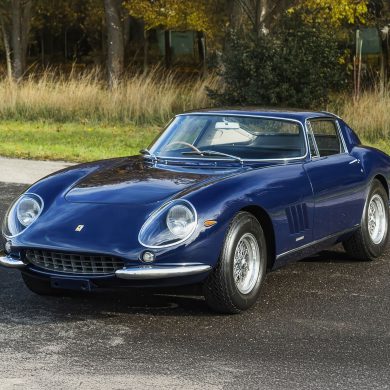
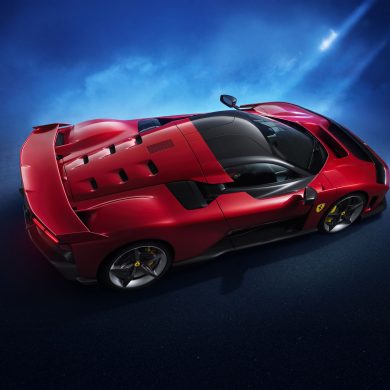
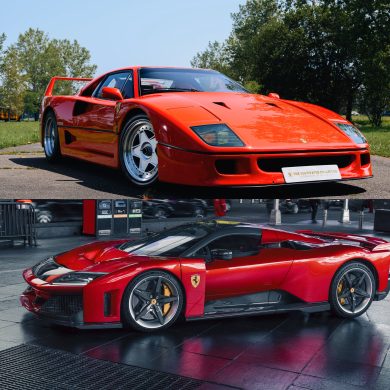
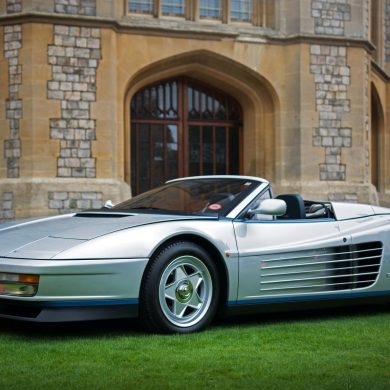
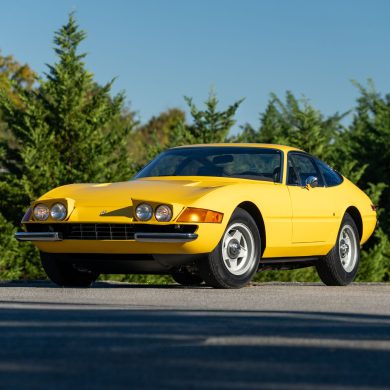
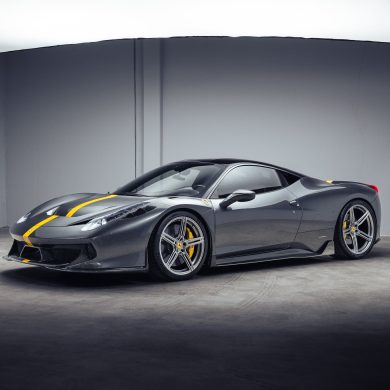


This is all I asked for at Christmas. Santa couldn’t meet the reserve though.
Interstingly, if you convert the above numbers to Euros (approximately)at two points in time, now and roughly six months ago, the low end of the pre-sale price equals the high bid. For example, last summer the Euro was about 1.55 USD and the exchange is currently, let’s say 1.32 USD. In this scenario, 2,315k USD with the cheap dollar and 1,974k USD at a stronger dollar both convert to about 1,495 Euro. That would tend to explain the run-up in values over the past two years and the recent sharp declines more than anything else at the high end.
Can you explain to me how photos of which I am the author end up on your site without my consent?
didier charre French photographer